How to care for air plants – expert tips to help them thrive
Essential advice on how to care for air plants without needing any soil, plus tips on keeping these indoor marvels flourishing
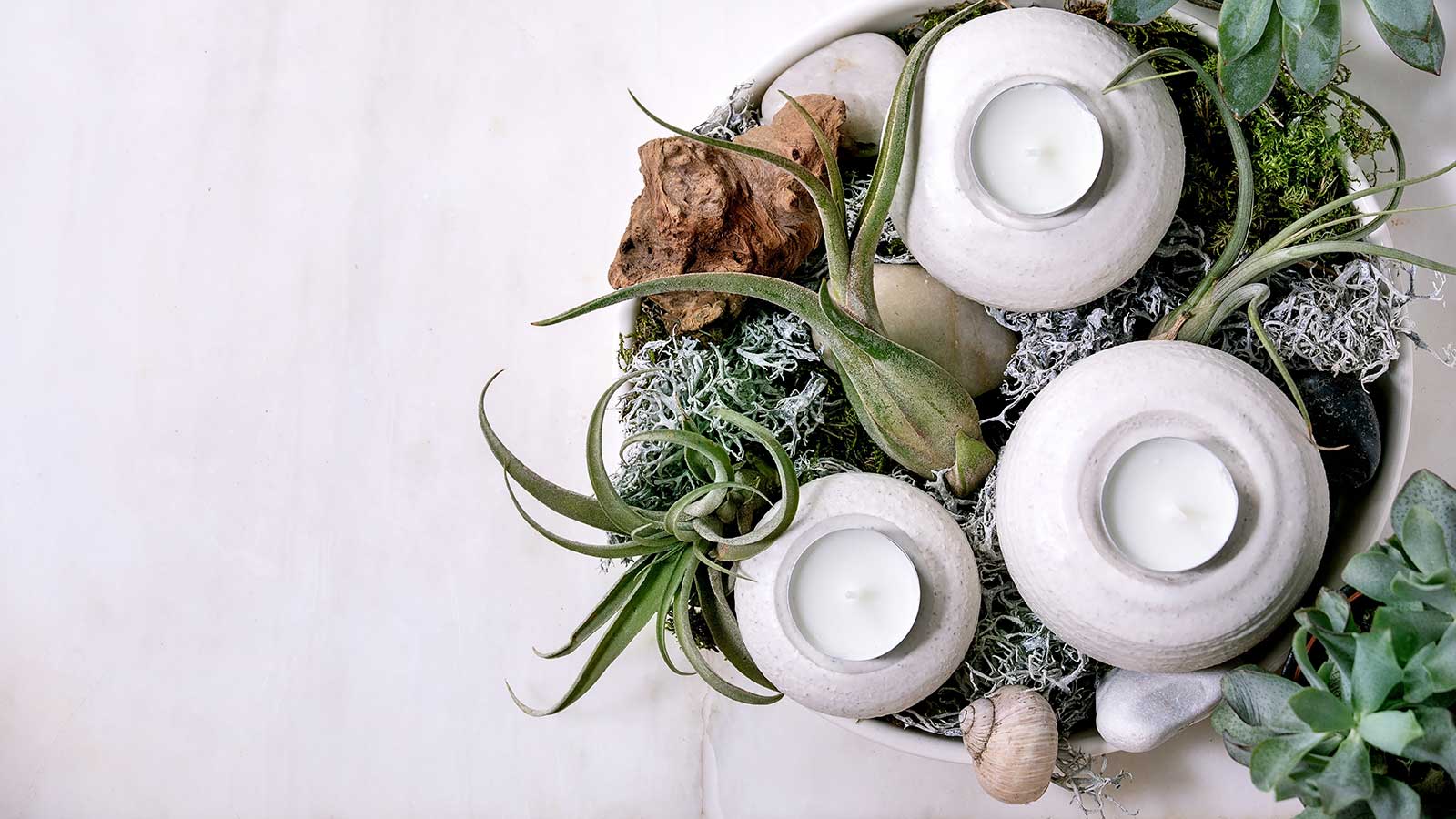

As the name suggests these plants grow in air, needing no soil to survive. Once you know how to care for them, nothing could be easier than brightening up your home with these fantastic indoor plants. With their intriguing foliage and flowers they create a contemporary, designer look that takes little effort to maintain.
The flowers tend to be brightly colored and often appear from bracts, which are petal-like modified leaves. These flowers add another layer of interest when they appear. In some species, the leaves also change color as the flower buds start to develop, forming a skirt of red or pink foliage to accompany the blooms.
These tiny treasures come in a range of shapes, textures and colors, so choose a few contrasting varieties to build an eye-catching collection. It's perhaps this versatility which makes them one of the best indoor plants to grow. They can also be grown outdoors in warmer, humid climates.
Air plant care guide – expert tips and tricks
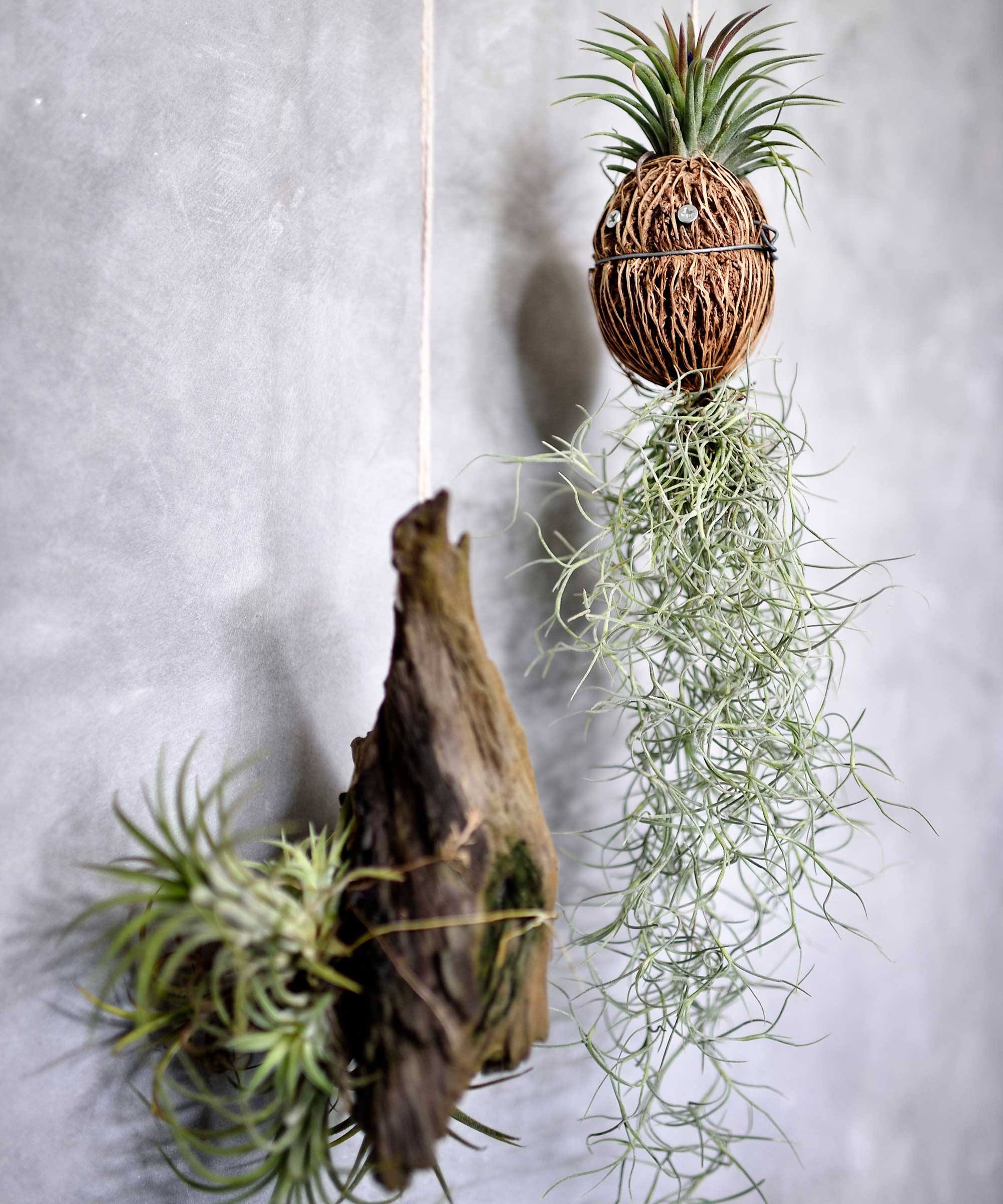
All air plants are easy to care for, and because they take up very little space, they’re great for gardens in small rooms and apartments.
While they do require very little maintenance, you will need to know how to care for air plants correctly for them to truly thrive.
- The first rule when it comes to air plant care is to never plant them in soil. It will be too moist for them and they will subsequently rot and die.
- Air plants thrive in a fairly humid atmosphere, so can be a good choice for bathroom plants.
- Don't place air plants too close to windows where there is direct sunlight for prolonged periods of the day, as the heat from the sun will be excessive.
- It's only necessary to mist your air plants once or twice a week.
- To give air plants a boost, it's a good idea to feed them with a specialist plant fertilizer during spring and summer, which will aid their growth. You can reduce this at other times of the year.
How much sunlight do air plants need?
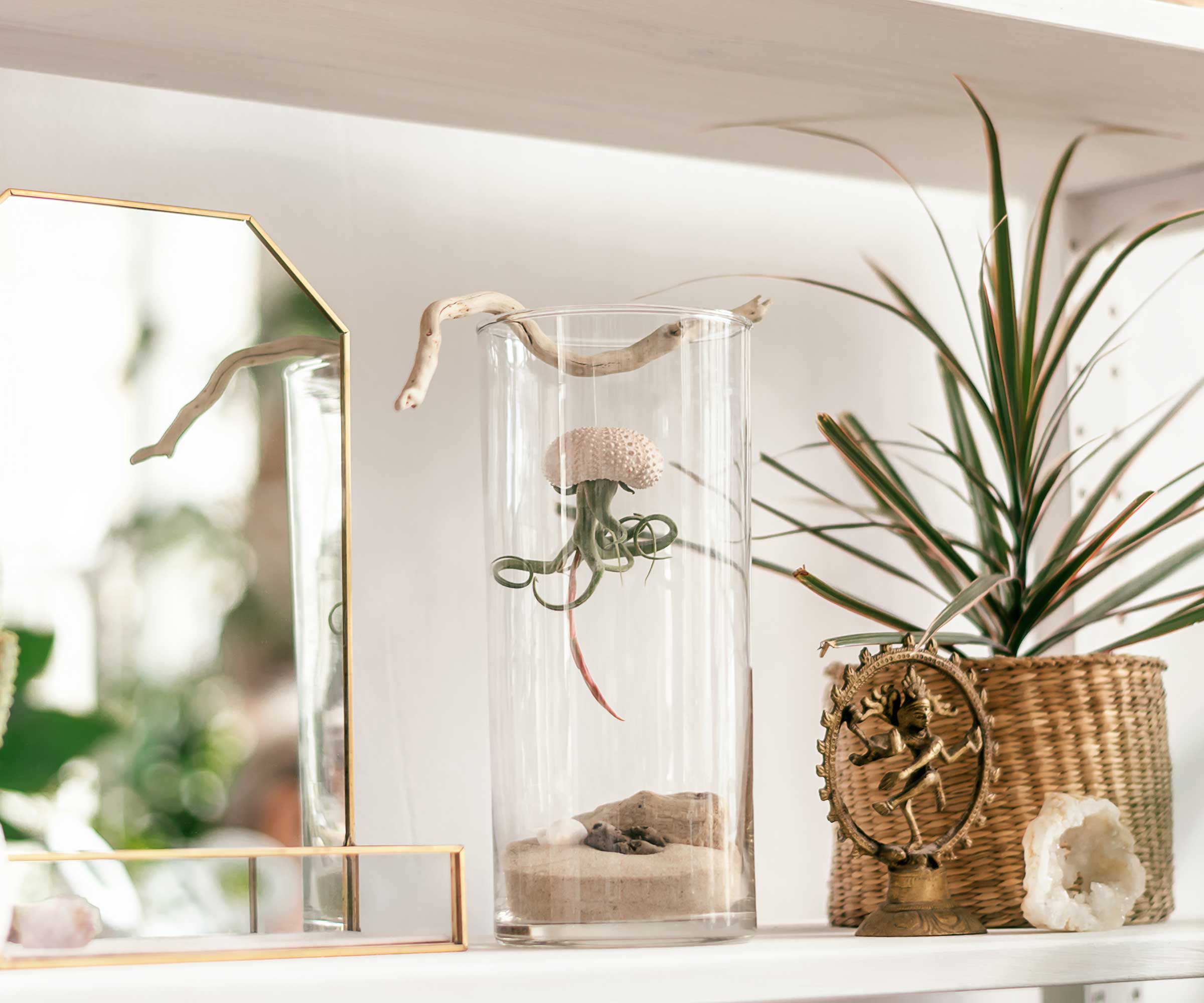
Simply display them on a dry surface in a bright area for a striking indoor plant idea in your home. Keep them out of direct sunlight, and preferably in a humid atmosphere, such as in a kitchen or bathroom. If your home receives little natural sunlight, opt for green-leaved varieties like Tillandsia bulbosa and Tillandsia cyanea or try a silvery Tillandsia xerographica in sunnier spots.
Keep all air plants, including the desert-dwelling species, away from south-facing windows, which may scorch them during the summer months. Also do not grow them close to radiators and heated floors.
What's the best temperature for air plants?
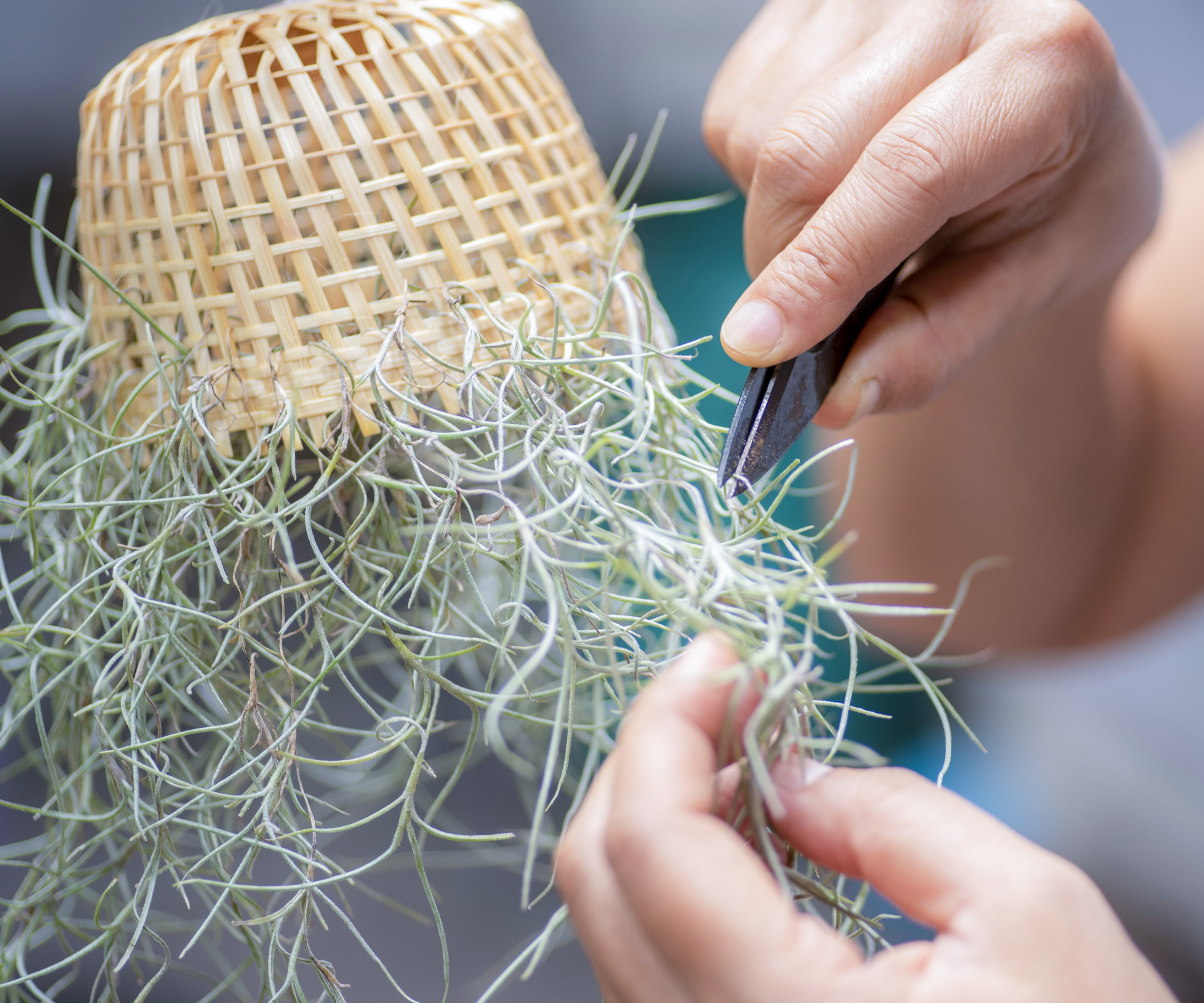
Most air plants will be happy in an average home environment – ideal temperatures for them are between 60–75°F although they will tolerate hotter and cooler conditions as well. A small selection, including Tillandsia aeranthos, will even cope with a few degrees below freezing point. Check labels carefully for individual plants' temperature tolerances, to see what your choices will be happy with.
Good air flow also helps to keep these plants healthy. So from spring to autumn when the weather allows, open the windows to keep it circulating and to top up humidity levels.
How to feed air plants
These plants will put on more growth and flowers if they are given a specialist air plant fertilizer once a week in spring and summer, and twice a month in fall and winter. To feed, simply add the fertilizer to the water in a tray or misting bottle.
Despite being one of the best tropical plants to grow, these stylish treasures are tough and forgiving, so don’t worry if you forget to feed them from time to time. However, never be tempted to add twice as much fertilizer to make up for missed applications, as this may do them more harm than good and you may see your air plant turning brown.
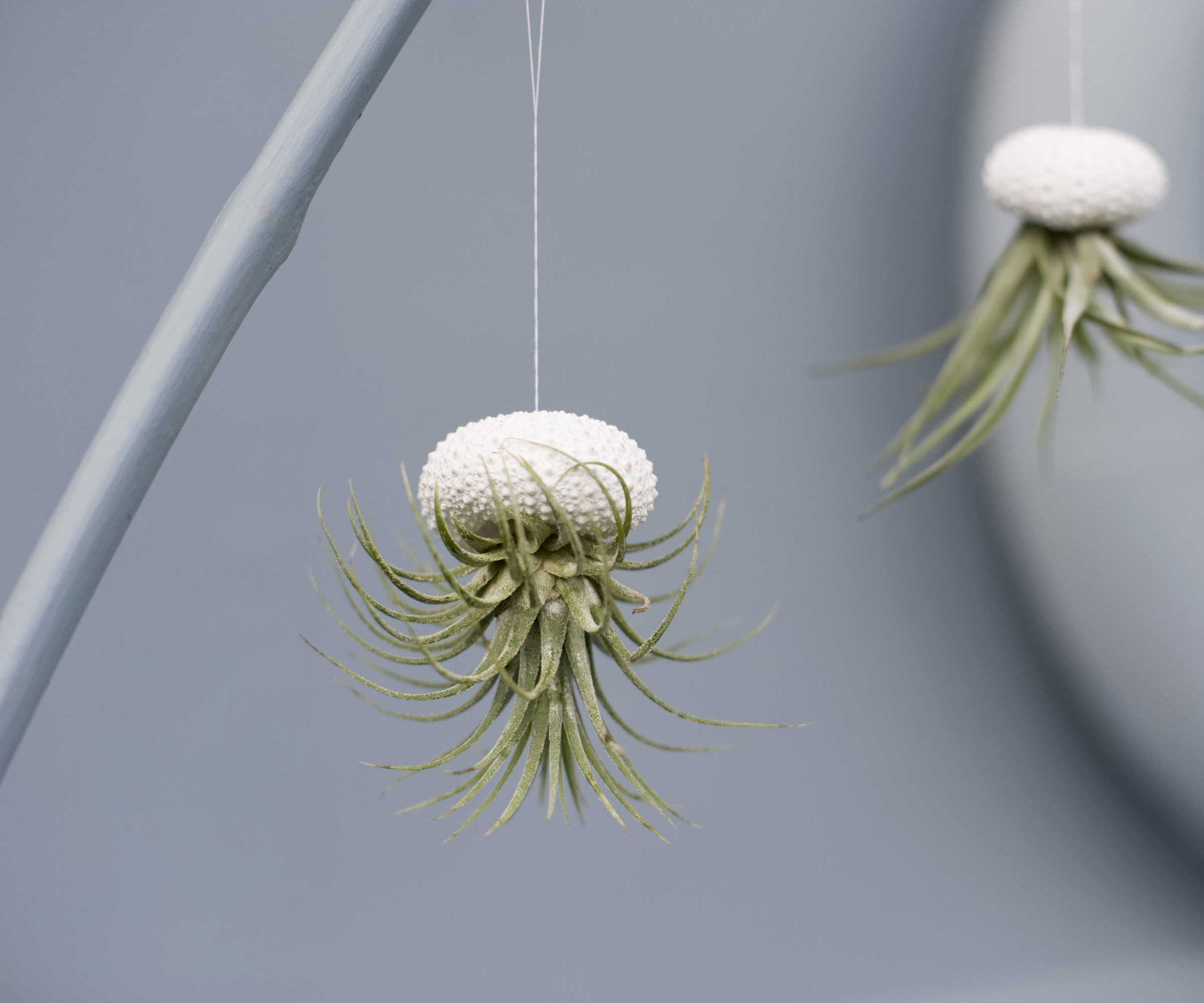
Where to place air plants
Since air plants need no soil to survive, the sky is the limit when displaying them. You can pop them into shells, set them on a sandy base in a glass jar or a hanging tealight holder as an indoor hanging plant, or set them on a decorative piece of wood or on a rock. The easiest way to show off your plants is to simply place them on their mount or in a glass container, but don't push them too far into a shell or mossy surface, where their bases will not be able to dry off properly after misting, which may cause them to rot.
If you want to create a more ambitious display, perhaps attaching your plants to rocks or crystals, or hanging them upside down from a shell suspended from the ceiling, you will need to glue them in place.
Common pests and diseases for air plants
Air plants rarely suffer from attacks by pests or diseases making them some of the more low maintenance indoor plants. They are one of the best plants for beginners because they have so few problems, and while we may have to protect other plants from common houseplant pests such as thrips or mealy bugs, these little beauties have so far never been affected.
What are air plants?
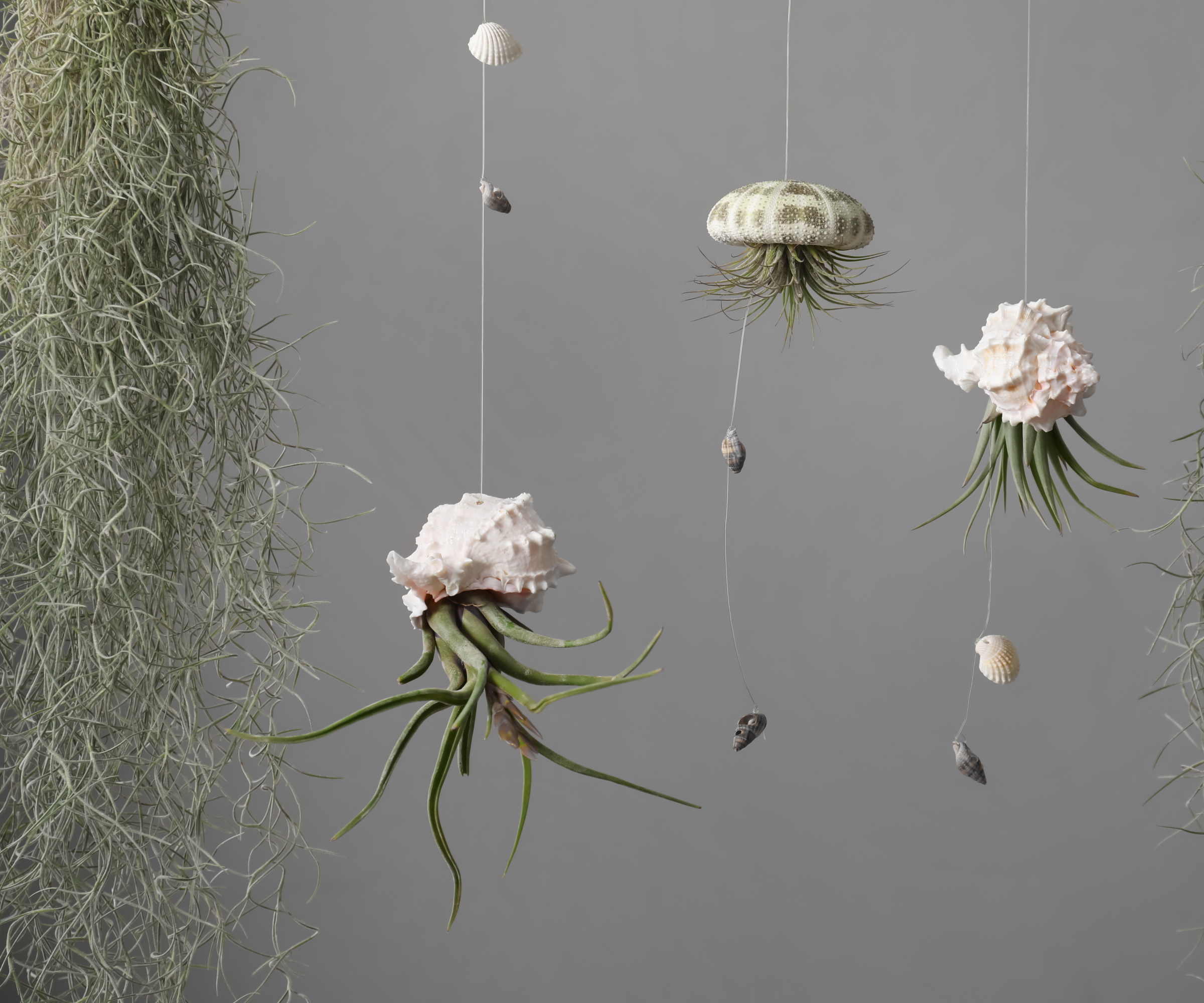
Air plants are a type of bromeliad and belong to the Tillandsia group. In the wild, they are found growing on other plants or rocks and are known as epiphytes. This means they absorb nutrients and moisture through their leaves rather than a network of roots, although they may develop ‘anchor roots’ that help them to hook on to their host.
If you look closely at the foliage, you will see that it’s covered in what look like tiny hairs. In fact, these are specialised scales, or trichomes, which help them take up water. Plants that feature lots of these will have silvery or fluffy appearance and come from desert regions, while the darker green types have fewer trichomes and hail from tropical forests. This means air plants are ideally suited to creating tropical garden ideas both indoors and out.
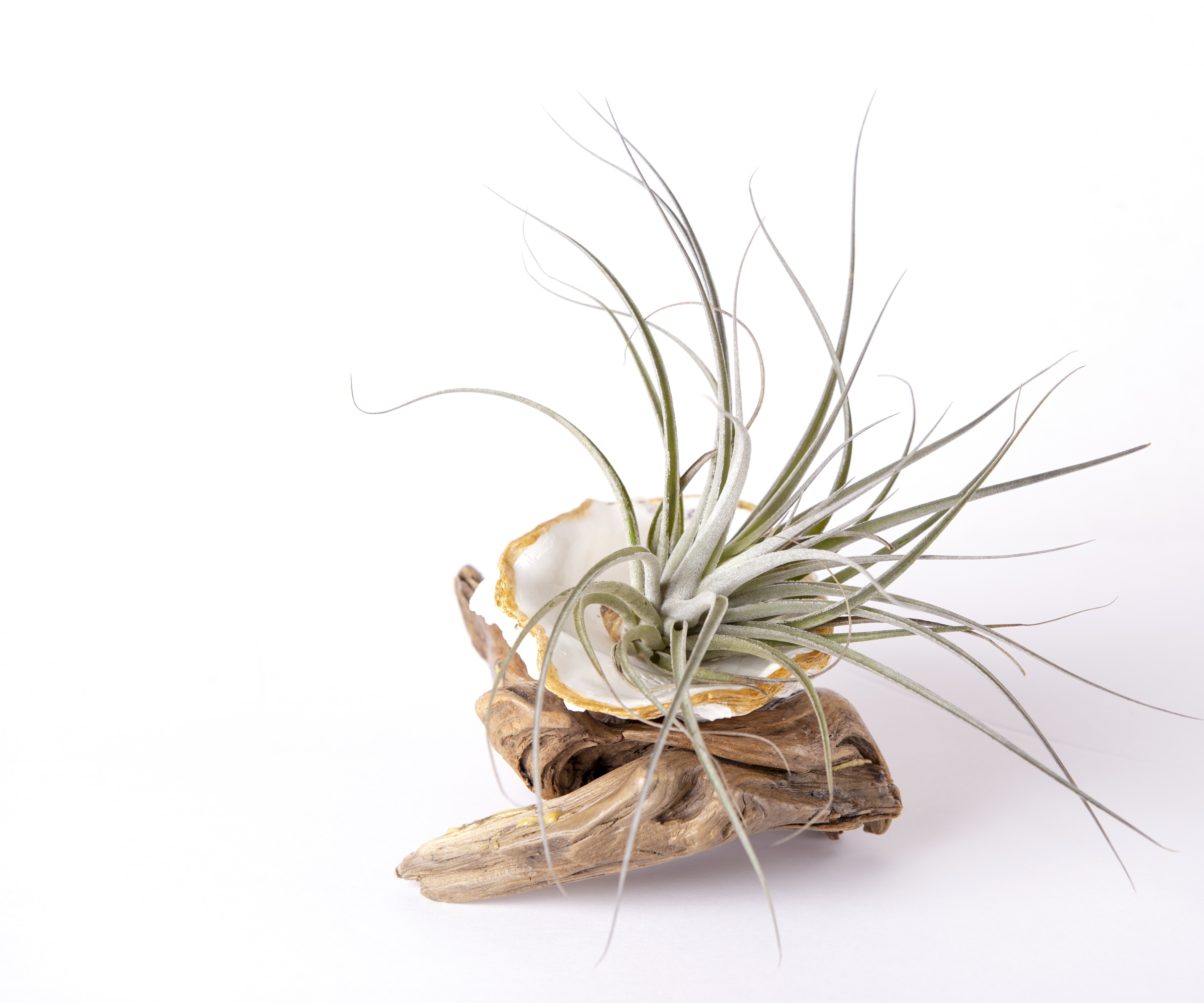
FAQs
How should I water my air plant?
To water an air plant, soak it in a shallow tray of tepid rainwater or distilled water once or twice a week – water less frequently in winter when temperatures and growth rates are lower.
How do you make more air plants?
After your air plant has finished blooming, remove the faded flower stem to allow the plant to focus on new leaf growth, rather than making seed.
To create new plants to bulk up your collection, you can detach the pups when they are one third of the size of the mother and simply grow them on as normal, watering and feeding as described above – it’s as easy as that.
Can you keep air plants in the bathroom?
The simple answer is yes. In fact, air plants are one of the best bathroom plants. Bathrooms are often more humid than other areas of the house and air plants draw moisture in from the air through their leaves. The more moisture in the air the healthier the plant.
Just be sure to keep them in a bathroom which gets a good amount of natural light and keep your plant out of direct sunlight.
It's clear that air plants make a fantastic choice for low maintenance houseplant décor, as they can add magic and beauty to any size of space. With these super simple tips, you'll be creating a thriving collection in no time.
Sign up to the Homes & Gardens newsletter
Design expertise in your inbox – from inspiring decorating ideas and beautiful celebrity homes to practical gardening advice and shopping round-ups.

Zia Allaway is a garden book author, editor, and journalist, and writes for a range of gardening and women’s magazines, including Easy Gardens, Homes & Gardens and Livingetc, as well as The Guardian and The Daily Telegraph newspapers. She has also written books for the Royal Horticultural Society and Dorling Kindersley publishers, including Eco-Gardening, Compost, Low Maintenance, Practical House Plant Book, Practical Cactus & Succulent Book, Indoor Edible Garden, What Plant Where, and the Encyclopedia of Plants and Flowers.
-
 How to grow impatiens – garden experts reveal the secrets to growing this shade-tolerant, sparkling summer plant
How to grow impatiens – garden experts reveal the secrets to growing this shade-tolerant, sparkling summer plantBoth 'Busy Lizzie' and 'New Guinea' impatiens can thrive in shady yards
By Ellen Wells Published
-
 Charli XCX's dining room is a 'treasure-trove' of one-of-a-kind pieces – it's the most unique hosting space I've ever seen (and surprisingly replicable)
Charli XCX's dining room is a 'treasure-trove' of one-of-a-kind pieces – it's the most unique hosting space I've ever seen (and surprisingly replicable)The singer's Tudor-style dining room features eclectic furnishings, a mix of patterns and bright colors that all work together beautifully
By Hannah Ziegler Published